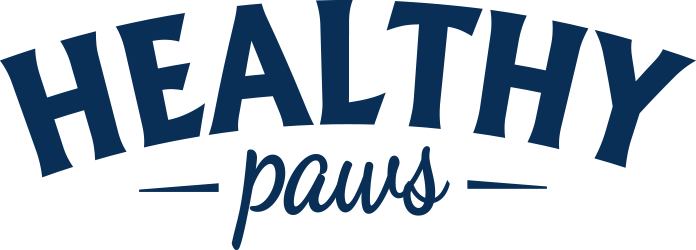Blog
Tips for your new litter
If your bitch is having her first litter, it’s as much a learning curve for you as it is for her. We’re often asked questions about how best to feed puppies, when they should be weaned, when they progress to adult food and so on, so here are the answers to some frequently asked questions.
Approximately 2 weeks before giving birth the Dam will need to increase her calorie intake by about 20%, the easiest way to do this is to feed a quality puppy food as it has a greater protein and fat content. Rather than feed the Dam a set quantity, it is best to let her have free access to food, she knows what her body needs. It is important that puppy food is fed while she is lactating as well.
Every dog breed is different, so a Chihuahua becomes mature before a Labrador for example, but normally at around 5 weeks it’s the time to start to introduce your puppy to a complete dry food. The Healthy Paws British turkey and brown rice puppy food recipe has a smaller crunchy kibble, ideal for starting your puppy off and helping its teeth and gums to stay healthy. Take the hint from the mother, if a bitch has a large litter, the likelihood is that she will start to kick the pups away earlier, if her litter is just four pups then she will be happier to keep feeding them for longer. We recommend soaking our puppy food to create a porridge initially using warm water to soften the kibble and feed that for the first three days, gradually introducing more and more uncrushed dry kibble to get them used to the crunch over the next few days. By 8-10 weeks old they should be eating fully dry food.
Give the puppies' new owners a few days worth of the food that they have been on, so this is not another shock to them when they get to their new homes. If they're going to change from something else to Healthy Paws, we recommend that they do an immediate swap after those first couple of meals. If their puppy experiences a runny tummy when it first gets to them, that’s usually due to the stress of moving home. Follow the feeding guide on the back of the pack and however distasteful it may sound, keep an eye on its stools. If the first couple of stools are hard, then there’s a soft runny one at the end, it denotes that you’re feeding too much food, so reduce the amount you’re feeding slightly.
Puppy food recipes are developed based on bone growth. The important thing about puppy food is the phosphorus/calcium ratio. Phosphorus absorbs calcium and this mix is used for brain growth and eye function, what’s left is then used for bone growth. For a balanced puppy diet there should be one part phosphorus to 1.2 parts calcium.
The ingredients in Healthy Paws puppy food are designed to support and maintain healthy hips and joints for growing puppies. The use of British turkey meat and the mix of oils and minerals in this food is rich in DHA supporting brain and eye function too. Our hypoallergenic recipes are ideal for your puppy’s sensitive tummy. Naturally high in vitamin C and anti oxidants, its vegetables, herbs and fruits support the immune system and the single source of protein makes it highly digestible and extremely tasty. Normally you should feed your puppy four times a day up to 12 weeks and then cut it to three times a day, by 16 weeks it should be twice a day. A dog should need about two poos a day, the rule is that the smaller the poo, the better it is because the goodness of the food has been absorbed into the body.
Puppies move onto adult food at different rates depending on the breed, but as a guide a Jack Russell would be ready to move onto adult food at 8 months, a Great Dane at 14 months. Giant breeds don’t really have a ‘junior’ period, two years down the line they’re ready for senior food. Essentially, you stop feeding puppy food when the dog’s height has been achieved and it starts to put on weight.



